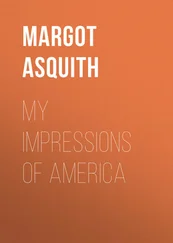At the same time, whiteness can be embraced as a marker of difference, a marker that many bitterly fight to keep distinctive. The construction of this difference extends back to the earliest period of European colonization of the United States, when it was a marker of status and power. While whiteness is often invisible to those who consider themselves whites, it is not always the case that it goes unnoticed. For example blacks, Latinos/as, American Indians and Asians often notice whiteness; for many of them, successfully negotiating the social and institutional worlds of America requires recognizing whiteness so as to avoid negative outcomes. But whites, too, are sometimes cognizant of their racial identity. When confronted with a perceived threat to their racial advantages—such as blacks moving into a white majority neighborhood—whites may consciously mobilize on the basis of race, in order to organize resistance to neighborhood change.
Such neighborhood characteristics, which influence white racial identity, are fairly stable, but the meanings of whiteness can also be shaped by the specific settings in which whites interact with others. For example, the mentioning of racialized issues such as crime, schools, and neighborhoods can heighten awareness of whiteness even if no other non-whites are present. This awareness can take the form of superiority or defensiveness, as whites become conscious of threats to their status or reinforcements of their dominant position in society. For example, whites who are prompted to think about or discuss the racial composition of neighborhoods or schools might feel threatened by the changing demographics of the US, worrying that white spaces and institutions are changing to be less the province of whites (Craig and Richeson 2014a). Alternatively, contexts in which crime is discussed might arouse in whites a sense of superiority over blacks and Latinos/as: in these contexts whiteness can be stereotypically equated with law-abiding, pro-social behavior, in direct contrast to the presumed criminal behavior of blacks and Latinos/as. It need not matter, for this experience of white racial identity, what the actual association between race and crime is; it is rather the perceptions and the attitudes that have such a powerful impact.
Some whites become so conscious of their whiteness that they actually seek to transcend it, to identify with an entirely different race. Some whites feel guilty about the unearned privileges they have and consciously try to counteract these advantages by affiliating themselves with non-whites, or by participating in anti-racist efforts. Others, who had long thought of themselves as white (and whom others thought of as white), “discover,” by taking a DNA test, that they are not white at all. The presence of American Indian or African origin DNA sometimes prompts such whites to leave their old race behind and adopt a new identity (Roth and Ivemark 2018), thus transcending their whiteness (although not their white privilege).
Regardless of whether white people’s identities are colorblind, stigmatized, defensive, or transcendent, these people’s ways of thinking about themselves shape their attitudes toward other racial groups. However, the connection between identities and attitudes is not straightforward. Among people who identify as white, it is not the case that those who are most likely to acknowledge that their white identity is important to them are the most (or the least) racist groups of whites. Instead, the ways in which whites think about the meaning of whiteness influences their orientations toward other groups. For example, an individual who does not consider his or her whiteness to be symbolic of anything and goes through life blissfully unaware of his or her own race is unlikely to understand the profound influence of race on the daily lives of many non-whites. On the other hand, an individual who fully embraces the social dominance associated with whiteness is much more likely to assert his or her identity as a mark of superiority, or even supremacy. Whites who acknowledge their social dominance and still find it problematic can engage in anti-racist activism or paternalistic behavior toward non-whites. In Chapter 4there will be a review of the identity–attitude connection in survey responses, discussing how whites who have a strong sense of their identity are among both the most and the least likely to have positive attitudes toward blacks.
Attitudes expressed in survey data are only one way of measuring how whites understand the world around them. Whiteness is expressed culturally as well. If one thinks of culture as patterned behaviors and preferences, it can be a useful vehicle for understanding the relationship between structure and identity. While we often associate culture with forms such as music and film, it also applies to styles of relating to others, for instance to speech and dress, or to ways in which people enact their goals. The extent to which there is a “white” culture has been debated. Certain musical forms, such as country and, to a lesser extent, classical music, have been deemed to be a part of white culture on the basis of the themes and styles of their production as well as of the demographics of its audiences. More troubling, white supremacist groups have extolled the virtues and achievements of European culture as a reflection of the greatness of “white culture” (Dentice and Bugg 2016).
Different cultures can also be expressed within social movements that go well beyond a set of preferences and patterned behaviors. Such movements are goal-oriented, organized institutional forms, which can serve as bases for the realization of the interests of dominant groups such as whites. In some cases, such as that of the Ku Klux Klan, these goals are pursued through violence. In others, the attempted realization of the goals that serve white interests is non-violent and the articulation of whiteness’s role within the movement is subtler. Such organized movements can lay bare the ways in which whiteness is a major actor in the political and social arenas in America today.
Movements organized around racial goals are likely to become increasingly prevalent as the demographic changes occurring in the US continue. The white population is becoming a smaller part of the overall American population, with Latinos/as in particular making up a larger proportion. By the mid-century, whites are predicted to represent a minority of the country’s population. Much of this growth in the non-white population is fueled by immigration, although a not inconsiderable amount is also generated by a rapidly increasing multiracial population. Depending on the extent to which multiracial individuals and members of some immigrant groups racially identify as white in the future, the white population might not be declining that much, after all (Alba 2016). Just as the boundaries of whiteness expanded in the early twentieth century to include Jews, Italians and other European immigrants who were considered not quite white, so too might groups currently considered non-white be regarded as white in the near future. Alternatively, however, Fox and Guglielmo (2012) argue that European immigrants were never actually outside the white racial boundary; their experience, therefore, has little to tell us about the future white racialization of other groups.
In general, the story of whiteness is both one of structures of oppression that extend back to the founding of America and one of a rapidly changing set of complex identities, which lead simultaneously to conflict and cooperation in contemporary life. In order to understand the ways in which these rigid structures and complicated perceptions permeate American life, we must examine some of the many meanings of what it is to be white—including the racial privilege inherent to them all.
Читать дальше












